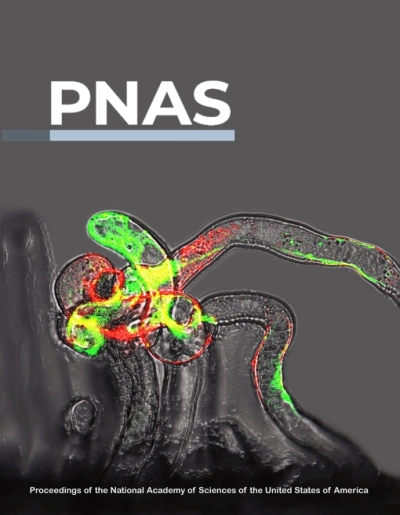Paving the Way for Rhizobial Infection, the Role of Aurora Kinase in Nodule Symbiosis Come to Light
Legumes establish mutualistic endo-symbiosis with nitrogen fixation rhizobia, thus play a crucial role in agricultural and ecological systems. Significant progresses have been made on understanding the mechanism underlying this symbiotic relationship over the past decades. However, how rhizobia infect and colonize host cells is still largely unknown. The recent study carried out by Jin-Peng Gao et al revealed Aurora kinase 1 (AUR1) plays a crucial role for rhizobia infection. This research is currently published online in PNAS in October.
Through a transcellular tube crossing the whole root hair and deep-down cortical cells, the infection thread, soil rhizobia can safely infect the nodule, turning it into the nitrogen fixation factory. Aurora kinase is known to have the conserved role across eukaryotes in spindle formation during mitosis. The research team found that AUR1 mutation caused the defective infection in Medicago truncatula. Multiple infection threads were observed in root hairs, indicating the mis-directed cell wall deposition. Further results demonstrated that AUR1 also acts together with several kinds of microtubule associated proteins (MAP) in the root hairs during infection under the direct regulation of transcription factor MYB3R1 (R1R2R3-Myb). MYB3R1 regulates AUR1 expression via two closely spaced mitosis-specific activator elements that only present in legumes. These results lead to the establish of a model in which the MYB-AUR1-MAP mitotic module serves to direct the transcellular deposition of cell wall material for the growing infection thread, analogous to its role in cell plate formation. This progress provides a crucial entry point towards understanding the mechanisms that underlie endosymbiotic infection.
This research was carried out by a collaborative team, led by Dr Jin-Peng Gao in Prof. Jeremy Murray’s group at the CAS-JIC Centre of Excellence for Plant and Microbial Science (CEPAMS), Centre for Excellence in Molecular Plant Sciences (CEMPS), Chinese Academy of Sciences, Shanghai, China, with collaboration from Dr Ping Xu at Shanghai Normal University and Dr Cheng-Wu Liu at University of Science and Technology of China.

Pictured are legume root hairs undergoing symbiotic bacterial infection.
Link to paper: https://doi.org/10.1073/pnas.2202606119
Contact:
Dr. Jeremy Murray, Group leader
CAS-JIC Center of Excellence for Plant and Microbial Sciences (CEPAMS), CAS Center for Excellence in Molecular Plant Sciences (CEMPS), Chinese Academy of Sciences
Email: jmurray@cemps.ac.cn